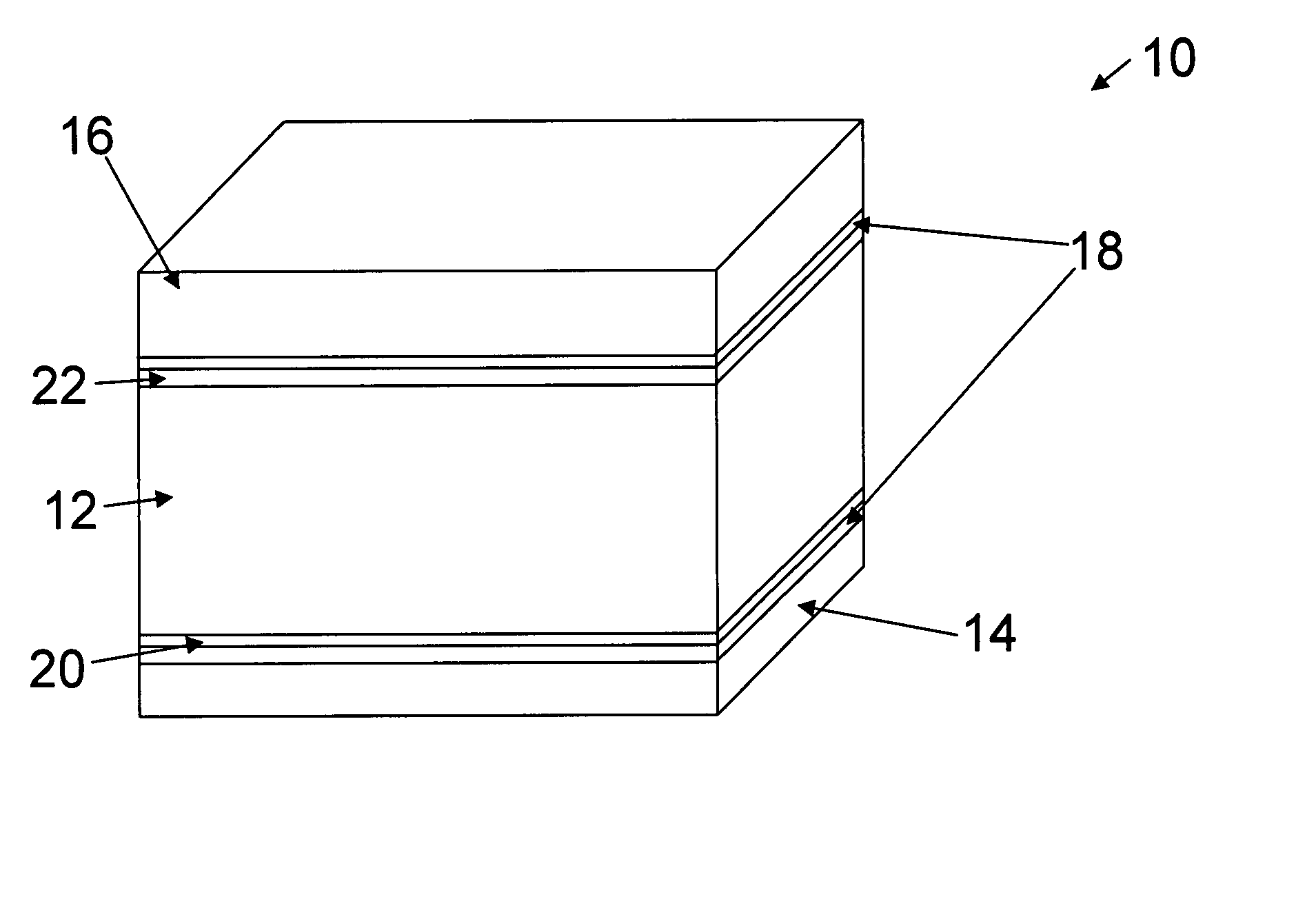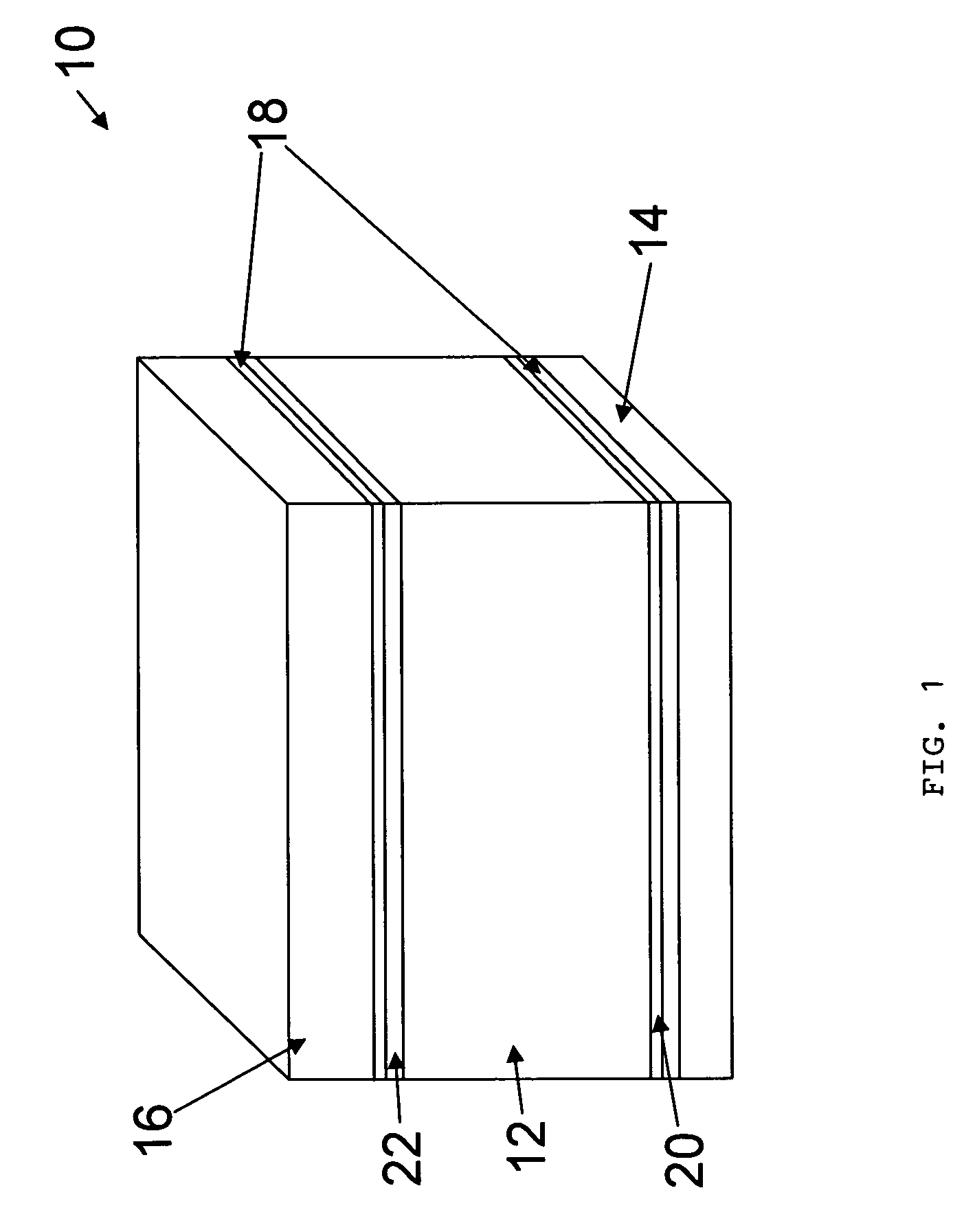Carbon foam structural insulated panel
a technology of structural insulation and carbon foam, applied in the direction of heat-insulating, ceramicware, other domestic objects, etc., can solve the problems of poor insulation and resistance of structures, lack of adequate thermal insulation properties, slow and labor-intensive approach, etc., and achieve high strength-to-density ratio, high resistance to combustion or charring, and easy machine
- Summary
- Abstract
- Description
- Claims
- Application Information
AI Technical Summary
Benefits of technology
Problems solved by technology
Method used
Image
Examples
Embodiment Construction
[0032] Carbon foams in accordance with the carbon foam core of the present invention are prepared from polymeric foams, such as polyurethane foams or phenolic foams, with phenolic foams being preferred. Phenolic resins are a large family of polymers and oligomers, composed of a wide variety of structures based on the reaction products of phenols with formaldehyde. Phenolic resins are prepared by the reaction of phenol or substituted phenol with an aldehyde, especially formaldehyde, in the presence of an acidic or basic catalyst. Phenolic resin foam is a cured system composed of open and closed cells. The resins are generally aqueous resoles catalyzed by sodium hydroxide at a formaldehyde:phenol ratio which can vary, but is preferably about 2:1. Free phenol and formaldehyde content should be low, although urea may be used as a formaldehyde scavenger.
[0033] The foam is prepared by adjusting the water content of the resin and adding a surfactant (eg, an ethoxylated nonionic), a blowin...
PUM
| Property | Measurement | Unit |
|---|---|---|
| Density | aaaaa | aaaaa |
| Density | aaaaa | aaaaa |
| Density | aaaaa | aaaaa |
Abstract
Description
Claims
Application Information
 Login to View More
Login to View More - R&D
- Intellectual Property
- Life Sciences
- Materials
- Tech Scout
- Unparalleled Data Quality
- Higher Quality Content
- 60% Fewer Hallucinations
Browse by: Latest US Patents, China's latest patents, Technical Efficacy Thesaurus, Application Domain, Technology Topic, Popular Technical Reports.
© 2025 PatSnap. All rights reserved.Legal|Privacy policy|Modern Slavery Act Transparency Statement|Sitemap|About US| Contact US: help@patsnap.com


